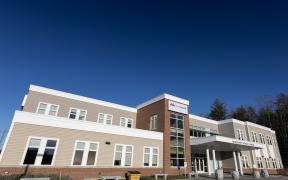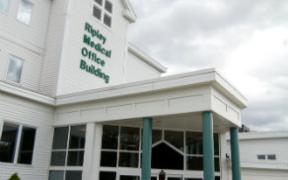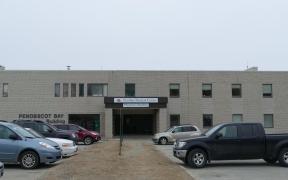Chronic pain or injury can keep you from doing what you love. MaineHealth orthopedic specialists can help get you back to your normal routines and activities. We use the latest technology and treatment protocols to treat a wide range of orthopedic injuries and conditions.
MaineHealth orthopedic care is available throughout Maine and in parts of New Hampshire. Patients can usually get orthopedic treatment, surgery and rehabilitation care close to home.
Where to find care
Conditions & services
More about orthopedic care
Orthopedic disorders include a variety of conditions affecting the muscles, bones, joints and ligaments. Diagnosing any orthopedic problem early can decrease the chance of long-term damage and pain. Talk to your primary care provider if you are having pain or are concerned about orthopedic disorders.
Common orthopedic disorders
Aching muscles, bones and joints is a common problem. They can range from sports injuries to age-related problems. Common orthopedic disorders include:
- Lower back pain
- Gout
- Arthritis
- Tendinitis
- Carpal tunnel syndrome
- Bursitis
- Injuries to bones, ligaments, tendons, or cartilage
There are various causes and risk factors that increase the chance of having an orthopedic disorder. Some of these include:
- Age
- Occupation
- Activity level
- Lifestyle
- Frequent sports training
- Wear and tear/overuse
- Injuries
- Sitting in the same position for an extended period of time daily
- Poor posture
- Lack of stretching
Orthopedic disorder symptoms
Symptoms of orthopedic disorders can range from mild to severe. Some common symptoms associated with orthopedic disorders include:
- Pain
- Fatigue
- Sleep disturbances
- Stiff joints
- Swelling
- Redness
- Dull aches
- Weakness
- Tenderness
- Limited range of motion
- Difficulty performing daily tasks
Talk to your doctor if you are experiencing symptoms associated with orthopedic disorders.
Orthopedic disorders diagnosis
A doctor may use a variety of methods in order to confirm an orthopedic disorder diagnosis. Some diagnostic methods include:
- Physical exam
- X-rays to detect bone fractures or bone loss
- Computed Tomography (CT) and Magnetic Resonance Imaging (MRI)
- Bone scanning
After the results of your tests, your provider will recommend a treatment plan.
Orthopedic disorders treatment
Treatment approaches for orthopedic disorders depends on the extent of the condition. Goals of treatment include managing pain and discomfort during daily activities. Occasional pain may be treated with exercises and medicine. Advanced disorders may require more intense therapy. Some treatment methods include:
- Injections with anesthetic or anti-inflammatory medications
- Exercise that includes muscle strengthening and stretching
- Medications such as nonsteroidal anti-inflammatory drugs (NSAIDs)
- Physical therapy
- Occupational therapy
- Therapeutic massage
- Surgery
Prevention is important in avoiding orthopedic disorders and delaying the progression of present conditions. Some prevention strategies include:
-
Performing regular strengthening exercises
-
Stretching before performing physical activity
-
Maintaining proper posture
-
Practicing correct form when lifting objects
-
Consuming adequate calcium and vitamin D in the diet to support bone health
"It was a miracle." Mariann’s Joint Replacement Story
After her hip collapsed, Mariann was unable to enjoy the activities she loved. Now, she is pain-free and walking again thanks to expert care and hip joint replacement by MaineHealth orthopedic surgeon Adam Rana, MD.
Learn how MaineHealth is committed to helping patients like Mariann keep moving and feeling their best.
Scott's Knee Replacement Story
Scott Adams was unable to walk to his mailbox without knee pain. After discussing his symptoms with Dr. Jeff Bush, Scott decided to have knee replacement surgery at MaineHealth Orthopedics and Sports Medicine Biddeford. Now, he is back to taking long walks, pain free.
Are you living with chronic pain? Watch Scott's story to learn how joint replacement could improve your quality of life.
































